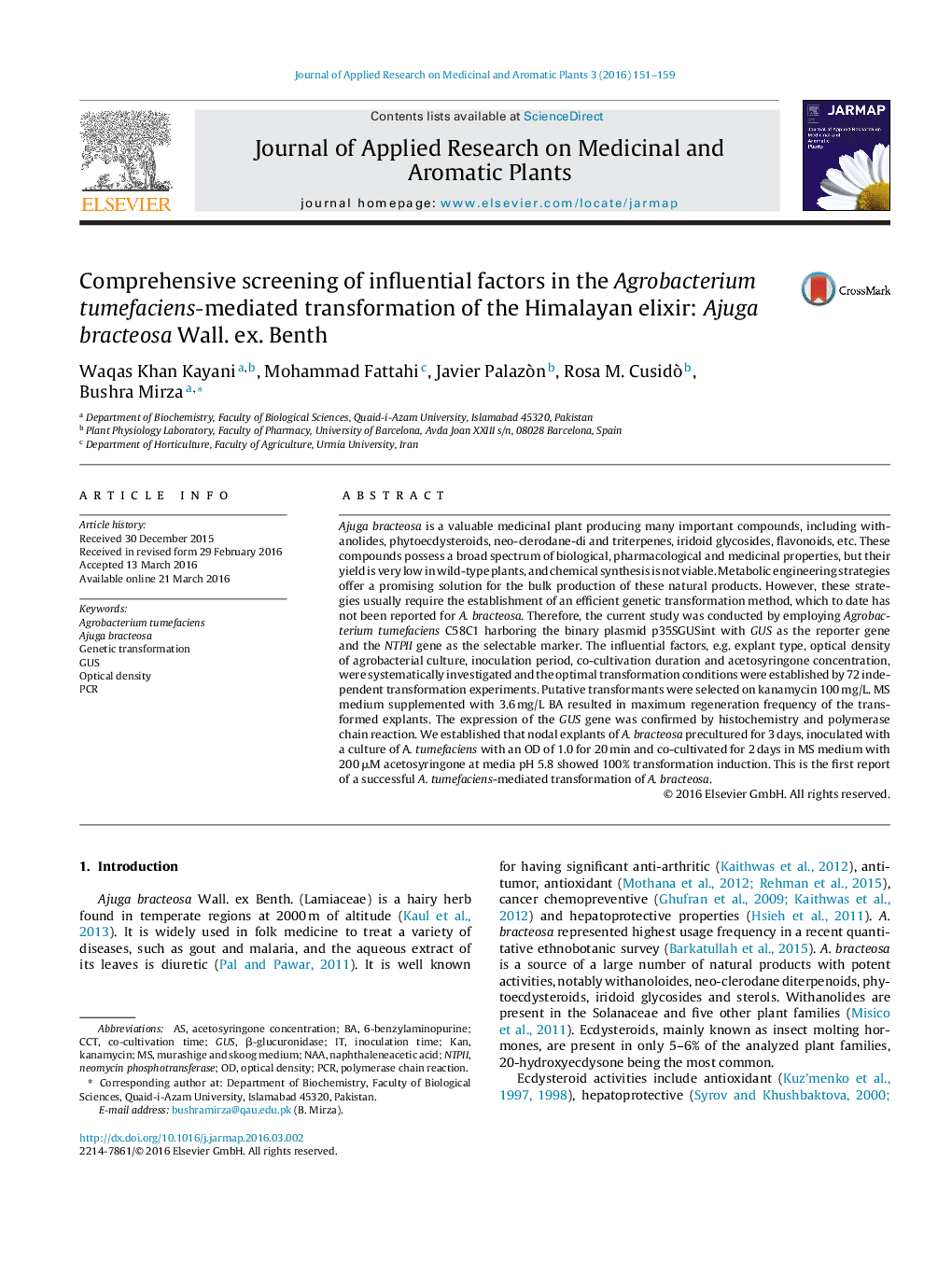| Article ID | Journal | Published Year | Pages | File Type |
|---|---|---|---|---|
| 5635197 | Journal of Applied Research on Medicinal and Aromatic Plants | 2016 | 9 Pages |
â¢Ajuga bracteosa explants generate callus at BA 0.225 mg/L and 1.48 mg/L NAA, multiple shoots at 0.45 mg/L BA and rooting at half strength MS medium.â¢Nodal explants of A. bracteosa when inoculated with a culture of A. tumefaciens with an OD of 1.0 for 20 min and co-cultivated for 2 days in MS medium with 200 μM acetosyringone showed 100% transformation induction.â¢The most important individual determinant of transformation induction was the agrobacterial OD of 1.0.
Ajuga bracteosa is a valuable medicinal plant producing many important compounds, including withanolides, phytoecdysteroids, neo-clerodane-di and triterpenes, iridoid glycosides, flavonoids, etc. These compounds possess a broad spectrum of biological, pharmacological and medicinal properties, but their yield is very low in wild-type plants, and chemical synthesis is not viable. Metabolic engineering strategies offer a promising solution for the bulk production of these natural products. However, these strategies usually require the establishment of an efficient genetic transformation method, which to date has not been reported for A. bracteosa. Therefore, the current study was conducted by employing Agrobacterium tumefaciens C58C1 harboring the binary plasmid p35SGUSint with GUS as the reporter gene and the NTPII gene as the selectable marker. The influential factors, e.g. explant type, optical density of agrobacterial culture, inoculation period, co-cultivation duration and acetosyringone concentration, were systematically investigated and the optimal transformation conditions were established by 72 independent transformation experiments. Putative transformants were selected on kanamycin 100 mg/L. MS medium supplemented with 3.6 mg/L BA resulted in maximum regeneration frequency of the transformed explants. The expression of the GUS gene was confirmed by histochemistry and polymerase chain reaction. We established that nodal explants of A. bracteosa precultured for 3 days, inoculated with a culture of A. tumefaciens with an OD of 1.0 for 20 min and co-cultivated for 2 days in MS medium with 200 μM acetosyringone at media pH 5.8 showed 100% transformation induction. This is the first report of a successful A. tumefaciens-mediated transformation of A. bracteosa.
Graphical abstractDownload high-res image (274KB)Download full-size imageGUS expression can be seen in nodal regions, leaf explants and at cellular level where guard cells, even inner cortical cells and the intercalary region present successful transformation.
